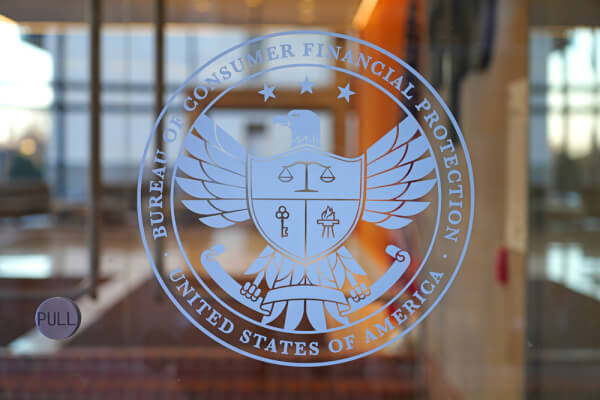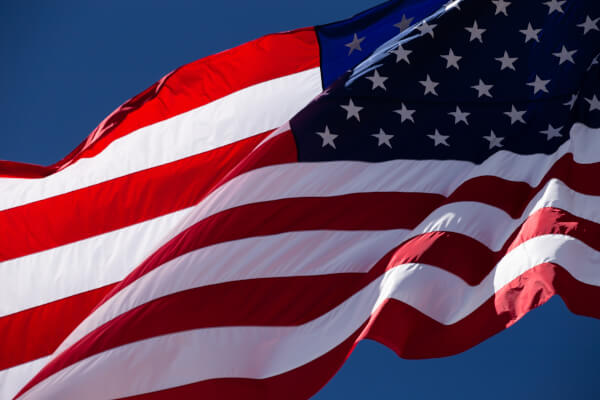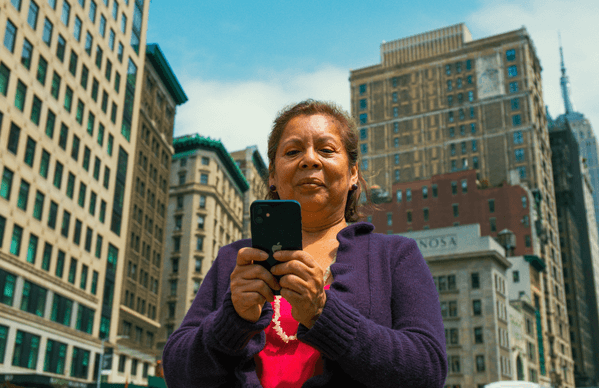Hispanic Heritage Month: Shaping the future of remittances together
Remittances tell a powerful story of sacrifice and hope. These transfers of money, sent by people living and working in the U.S. to their families in their home

His testimony explained how to make payments faster, cheaper and more transparent for US consumers—all of which is crucial for making finance fairer.
Here's his statement in full. You can find the link to the full hearing here.
Chairman Lynch, Ranking Member Hill, and Members of the Task Force, thank you for the invitation to testify today. My name is Harsh Sinha and I am the Chief Technology Officer at Wise, a global technology company with a mission to build the best way to move money around the world.
I have spent the last four years scaling the technology and product team at Wise. Before that, I worked in Silicon Valley for more than a decade leading and developing various ecommerce and payments products for companies including PayPal and eBay.
Wise was founded in 2011 and now has more than six million customers paying $5 billion every month, saving themselves $1 billion per year compared to average bank fees. Wise is one of the fastest growing financial technology startups in the world and offers an international money transfer service, a multicurrency stored value product that can be linked to a debit card, and an application program interface (API) that can be integrated directly into larger enterprises and banks.
Our company is attempting to solve the problem of cross-border payments. It’s really hard to move money between different currencies and countries. The correspondent bank infrastructure is expensive, slow, inconvenient, and lacks transparency. That’s why we’ve created our own cross-border payments network to move money around the world. Rather than relying on the traditional SWIFT messaging infrastructure and correspondent banking relationships, Wise instead utilizes local clearing and local payment rails to send money from our own accounts on both sides of the transaction. If you’re sending dollars to pounds, you pay dollars into our bank account in the United States (US), and we pay out to your recipient from our account in the United Kingdom (UK). As much as possible, money does not cross borders.
The technology that powers our product relies on a technical and regulatory understanding of local payment systems around the world. We connect directly to local payment systems, as in the UK where we became the first non-bank payment service provider to gain direct access to the Faster Payments Scheme, and indirectly through our bank partners, as in the US, resulting in more than 1600 currency routes and the ability to send money to bank accounts in 71 countries.
During my career so far, I have been fortunate to work on a variety of technology products both in the US and across the world. We have seen immense technological innovation in most industries in the last two decades - with a large percentage of that innovation originating from the US. But unfortunately, I can’t share the same sentiment about our payments infrastructure. The current financial plumbing that powers most payments for Americans is slow, expensive and does not meet the security standards one would expect in 2019.
Existing Payments Systems in the US
In the US, both the private sector and Federal Reserve play a vital role in processing and settling payments, whether through check clearing, ACH, or funds transfer services (1). The automated clearing house (ACH) network relies on both the Federal Reserve and The Clearing House (TCH) as operators. And, same-day electronic funds transfer systems are maintained by Fedwire and the private-sector Clearing House Interbank Payments System (CHIPS).
In recent years, there has been some progress increasing the speed of payments in the US. Card networks have developed Visa Direct and Mastercard Send. Zelle by clearXchange and the TCH Real-Time Payments (RTP) system have been adopted by large banks. While this is a positive development, the market and customer’s access to real time payment rails is still very fragmented.
Faster Payments
In 2019, moving money should be like sending an email - instant. It's simply the digital movement of data.
Consumers and businesses benefit from faster, lower cost, and more convenient payments. Faster payments supports financial inclusion, helps consumers avoid hefty fees from overdraft and check cashing, and unlocks working capital for small businesses who otherwise have to wait days for money to appear in their accounts. The benefits to consumers, businesses and the economy are clear. That’s why governments around the world are moving on from complicated and costly old systems and instead launching faster payments schemes to increase payment efficiency for their citizens.
The UK launched its Faster Payments Scheme (FPS) in 2008, India launched Immediate Payment Service (IMPS) in 2010, Europe launched Single European Payments Area Instant Credit Transfer (SCT Inst) in 2017, and Australia rolled out its New Payments Platform (NPP) in 2018. Many other nations - including Hong Kong, Singapore, Belgium, the Democratic Republic of the Congo, Malaysia, Portugal, Slovenia, Spain, France, Hungary, Netherlands, Canada, Columbia, and Peru - have either recently launched, will soon launch, or are exploring launching a faster payments scheme. We support the Federal Reserve’s recent move to prioritize faster payments systems development and launch by 2023/24.
Today, more than 20% of Wise payments are instant - i.e. we are able to move funds across countries connecting to different local payment systems in less than 20 seconds. Unfortunately, that’s rarely the case in the US for even domestic transfers. Consumers typically send payments through the slower ACH payment rails, which can take 1-3 days for the recipient to receive payment. Sending via wire is an option, but that could be significantly more costly. Banks can charge anywhere between $25 - $40 on average for the sender and usually also charge recipients some receiving fees. When Wise sends payments from the US to a country with a faster payments system, it can take a day or more, and the delay is usually on the US side.
The Federal Reserve should invest in creating a real time payments system
We strongly agree that the Federal Reserve should create a real-time payments system (FedNow). To be specific, we believe it should be a real-time gross settlement system based on ISO20022 standards (being also used by other faster payment systems) and the Federal Reserve should support a liquidity tool (like extended FedWire hours). The Federal Reserve is uniquely positioned, by nature of being a central bank, to guarantee ubiquity for financial institutions and inclusiveness for consumers. It can play a very important role in hastening the progress of real time payments in the US.
Why should the Federal Reserve build this system?
Finally, if we ever want to close out and move off older 1970s technology and processes, it’s imperative the newer real-time payment systems are fully adopted. If we don’t, we may see ourselves in 2040 still running a fragmented infrastructure with expensive-to-maintain technology and processes that weren’t built from the ground up to survive 70 years of technical innovation. But the adoption will be driven by ease of integration and the cost of running such services - both can be heavily impacted by the Federal Reserve based on the points above.
Hence, there is a clear public interest in the Federal Reserve building a fair and ubiquitous network accessible to every financial institution and payments provider that operates at low margins over time. In order to ensure that the public benefits from a faster payments system, Wise strongly supports the Federal Reserve playing a key leadership role, as central banks have done successfully in other jurisdictions. As we’ve seen around the world, consumers will benefit from improved speed, cost, convenience, and transparency.
Payments Access
In order to facilitate competition, and ensure the benefits of faster payments are passed on to consumers, the US should prioritize the accessibility and inclusion of non-banks in a faster payment system.
In the US, to access the domestic payments infrastructure, non-bank financial institutions like Wise must partner with a bank to settle payment transactions on behalf of our customers. It results in added costs, complexity, and partner dependence.
Payment systems in many jurisdictions, including our neighbors in Mexico and Canada, are in the process of modernizing and evolving their membership. Wise has been part of several important initiatives in this regard. In fact, in 2017, Wise became the first non-bank member of the UK’s Faster Payments Scheme and the first non-bank to maintain a central bank account for settlement at the Bank of England. The UK regulator (Financial Conduct Authority) actively engaged on this initiative with Wise and took a risk-based approach to opening up the scheme to non-bank members.
As trends in society and commerce evolve as a result of technological advances, many consumers now rely on new entrants and less traditional financial institutions to service their needs. Opening direct participation in the payments system to non-banks will help ensure competition flourishes fostering innovation and financial institutions are incentivized to pass along the benefits of speed and lower costs to consumers.
Additionally, diversification will reduce systemic risks that arise from a handful of banks hosting all of the indirect non-bank participants. With the current set up, a small number of banks can build a business function being the bank and access provider to payment systems for non-banks. This concentration of new businesses across a handful of banks creates potentially higher risk than if non-banks were accessing the faster payments system directly.
We support risk-based, open and fair access to the domestic payments infrastructure.
Fraud and Account Security Considerations
The benefits of faster payments to consumers are clear, but policymakers are also rightly asking questions about consumer protection and the risk of fraud. That said, even with a multi-day delay, fraud is still hard to stop. We see the current ACH system having higher fraud rates than most instant payment systems around the world.
We believe the security measures and regulations around customer protection and payment initiation should be much stronger than the current regime. Options like multi-factor authentication having the customer acknowledge payment initiation via a separate device or biometrics and sending instant notifications for transactions to a mobile device are quickly becoming the global standard. Any payment system built today should have these features built-in and the payment system should set the implementation guidelines.
Most US online banking applications today do not require multi-factor authentication and just require online ID and password. We have seen over time that passwords are a non-secure form of authentication given people tend to reuse them. Even with the The Clearing House’s current RTP implementation, customer facing fraud detection and account protection efforts are being pushed to sending participants without a standard requirement by the payment system. This is already leading to fragmented implementation of account protection measures across banks implementing RTP with a minimum of multi-factor authentication implementation. Unless we improve security measures at the payment initiation step by having the customer prove who they are to a sufficient degree, we believe the levels of fraud and security issues that we see today will continue.
By building their own system and requiring a standard approach to account security, the Federal Reserve can drastically reduce fraud in the system and help Americans keep their hard earned money. We have seen regulators in Europe require Secure Customer Authentication via the recent second Payment Services Directive (PSD2) legislation which the industry agrees helps make accounts and customer funds more secure and also standardizes the flows for customers, making them less confusing.
Along with this we are also seeing discussions, where financial institutions are implementing confirmation of the payee rules (beneficiary name check) to cut the risk of money being sent to wrong accounts. But it is my opinion that requiring stronger multi-factor customer authentication on account access and payment initiation will have the biggest impact to fraud and improve account security across the system.
International Payments
As policymakers consider issues related to payments, cross-border payments also deserve attention. The US is the largest originator of cross-border payments worldwide.
Transparency
Every year, it’s estimated that people and small-to-medium businesses transfer $10 trillion internationally and lose $200 billion in bank fees (2). Because most of these fees are hidden in inflated exchange rates, it’s extremely difficult to compare costs. The average global remittance cost is 7% and the lack of transparency in pricing is a major reason for the high fees (3). In fact, the World Bank agrees that “the single most important factor leading to high remittance prices is a lack of transparency in the market” (4).
We were pleased that the European Union recently enacted regulations to make sure people and businesses see the full cost of what they’re really being charged. That means no more fees hidden in inflated exchange rates. Additionally, the UK Financial Conduct Authority is driving a working group to deliver new transparency requirements for consumers and businesses. And, the Australian Competition and Consumers Commission recently concluded that action is necessary to counter the high cost and lack of transparency in international payments (5). There is also an effort from Finance Canada to bring more transparency to the costs of payments. We hope the ongoing discussions in the UK, Australia, and Canada lead to policy changes that ensure consumers and small businesses better understand the costs of international payments. That would ultimately offer choice, foster competition, and apply downward pressure to costs. We believe the US, the largest originator of cross-border payments worldwide, should also take action.
Implementing international standards
From a technical implementation perspective, given the US is lagging behind other major markets on faster payments systems, we can use this timing to our advantage and learn from other countries’ implementations to not only improve domestic payment speed and costs, but also align with international standards. The current ISO-20022 standard being adopted for the US faster payments implementation is also the same standard being used for the development of new faster payment systems globally. By standardizing message formats, and information sharing between the major faster payments systems across the world, the US has the opportunity to leap frog from having limited real-time payments in its domestic market to having all payments - domestic and international - being instant, gaining all the benefits of transactions with speed and lower costs in the global economy. Imagine a world where you could truly send payments instantly from your bank account in the US to an account in the UK or receive funds from Australia instantly into your US account. This would be a boon especially for businesses.
Conclusion
In conclusion, we believe there should be more than one real time payments systems in the US and the Federal Reserve is best positioned to deliver this and unlock the benefits for consumers, businesses and the economy at large.
Thank you for the opportunity to testify today on payments. I commend the Task Force for holding a hearing on this important topic and look forward to sharing our experiences with regulators and payment systems around the world. I look forward to answering your questions.
1 https://www.federalreserve.gov/newsevents/pressreleases/files/other20190805a1.pdf
2 https://www.mckinsey.com/~/media/McKinsey/Industries/Financial%20Services/Our%20Insights/Global%20payments%20Expansive%20growt h%20targeted%20opportunities/Global-payments-map-2018.ashx
3 https://remittanceprices.worldbank.org/en
4 https://remittanceprices.worldbank.org/en/about-remittance-prices-worldwide
5 https://www.accc.gov.au/system/files/Foreign%20currency%20conversion%20services%20inquiry%20-%20final%20report_0.PDF
*Please see terms of use and product availability for your region or visit Wise fees and pricing for the most up to date pricing and fee information.
This publication is provided for general information purposes and does not constitute legal, tax or other professional advice from Wise Payments Limited or its subsidiaries and its affiliates, and it is not intended as a substitute for obtaining advice from a financial advisor or any other professional.
We make no representations, warranties or guarantees, whether expressed or implied, that the content in the publication is accurate, complete or up to date.

Remittances tell a powerful story of sacrifice and hope. These transfers of money, sent by people living and working in the U.S. to their families in their home

So, will “fee-free” and “no fee” advertising disappear tomorrow?

There should be nothing to hide Sending money abroad is a big deal for many Brazilians living international lives. You might be supporting your family,...

“Junk fees” were certainly a buzz word of 2023, as the Biden Administration announced a crackdown across industries to protect American consumers. The White...

In a year, US military service members spent more than $455 million on foreign exchange fees. Of that, $301 million was lost in hidden fees.

Wise was founded by immigrants, built by immigrants, and is used by immigrants.